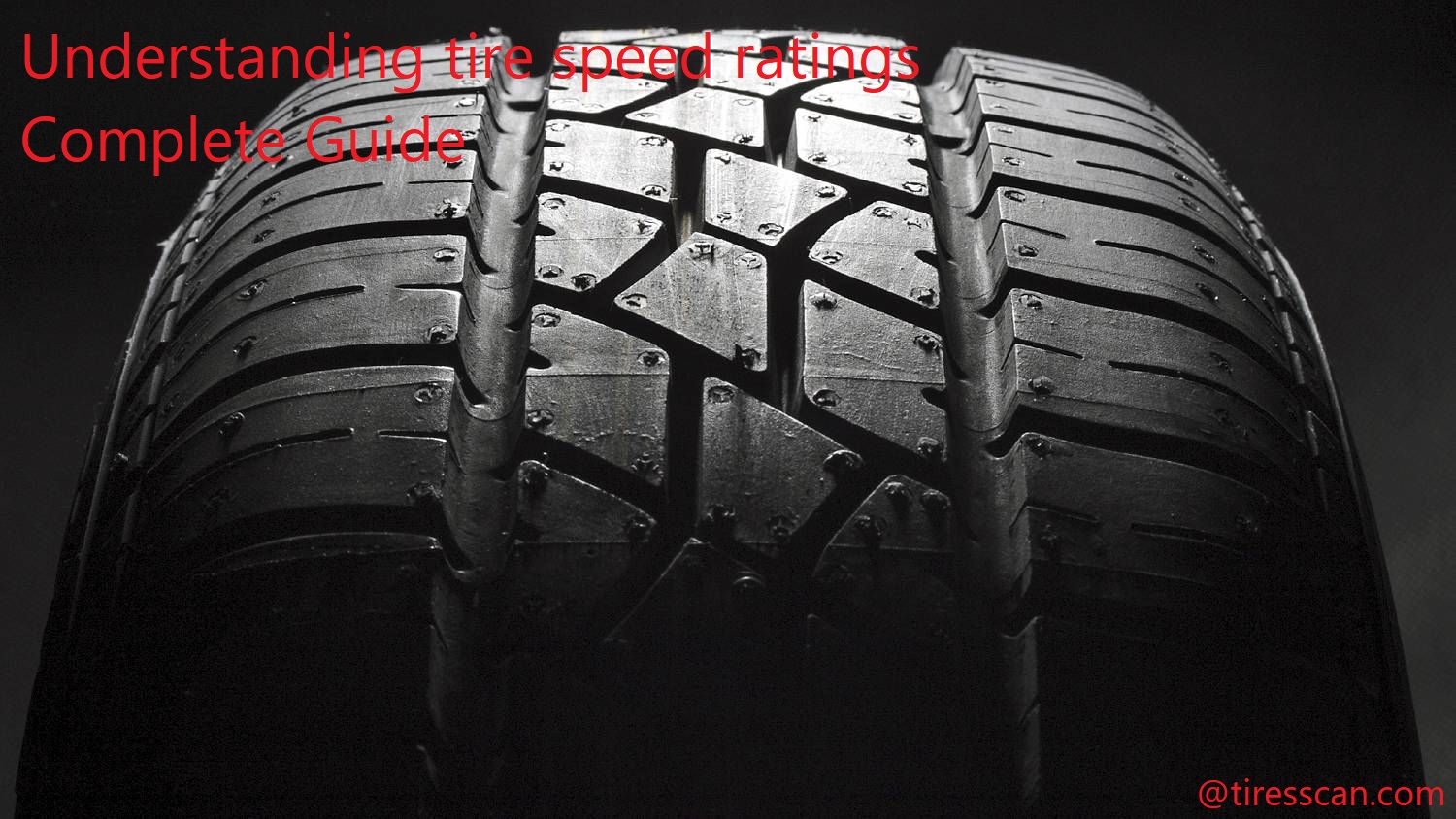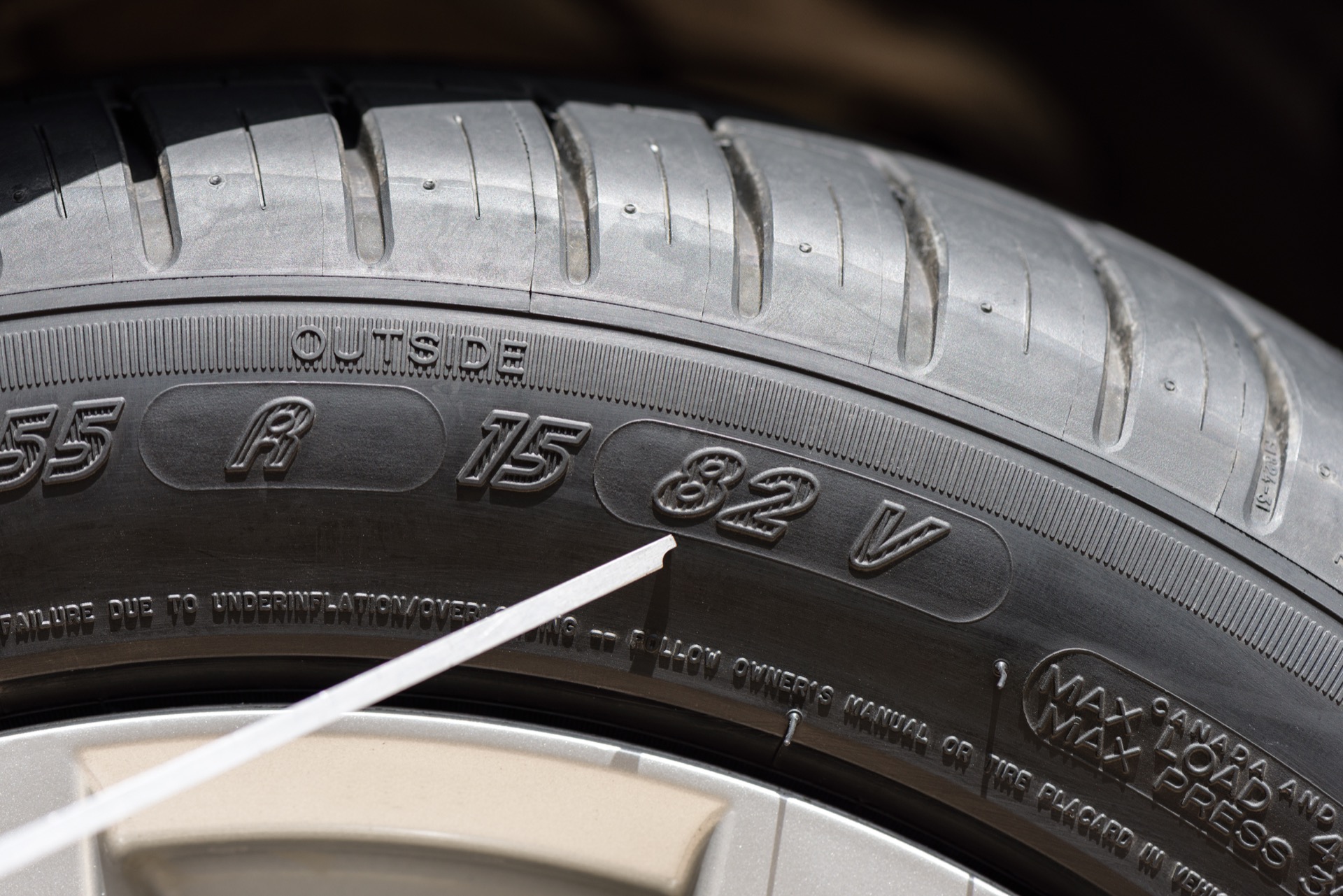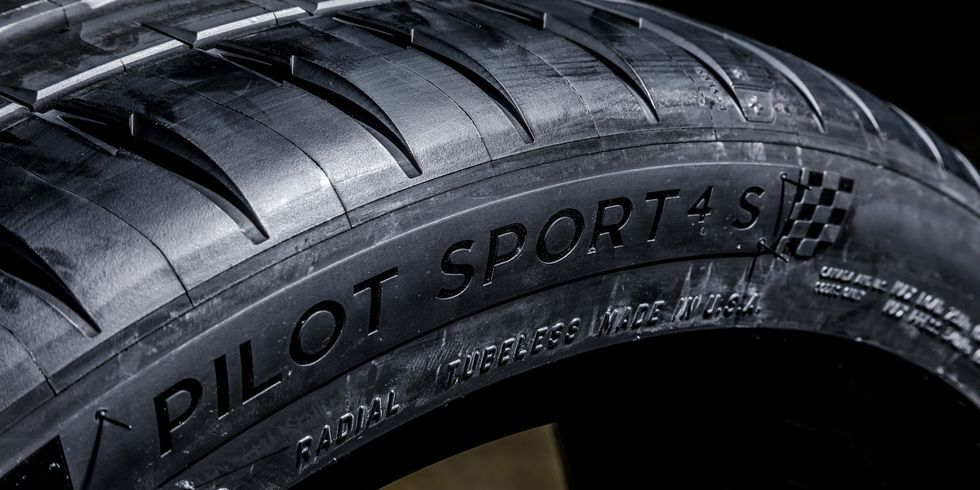Do you often find yourself overwhelmed when trying to choose the right speed rating for your tires?
Tires play a crucial role in providing protection, comfort and performance while driving. In this guide, we’ll help you understand speed rating and figure out what is best suited for your car. You’ll be in the know and make an informed decision!
This guide provides an understanding of tire speed ratings for all car owners and drivers. Tires are one of the most important components of a vehicle, and if used correctly, they can ensure a safe and enjoyable driving experience. The speed rating assigned to each type of tire tells you what kind of performance it offers at different speeds. This is important to know if you want to optimize your driving safety and performance while on the road.
In order to choose the right set of tires for your specific needs, it is important to understand how tire speed ratings work. There are several factors that go into choosing the right speed rating for your tires, such as wheel size, vehicle weight, drive type, brand selection and overall aesthetics of the car. In this guide we will discuss these factors in greater detail, as well as provide an overview of the different types of speed ratings available on tires today. By studying this guide thoroughly it is possible to make an informed decision when it comes time to buy new tires for your vehicle.
Explanation of the importance of tire speed ratings
Tire speed ratings are essential to the safety and performance of a vehicle. Tire speed ratings indicate the maximum speed a tire is designed to travel without risking damage or premature wear. The speed rating of a tire determines how much load it can safely bear in relation to its treadwear, traction, and temperature ratings, which measures the intensity of forces that act on the tire. Understanding these ratings and how they impact your vehicle’s performance can help you make safe driving decisions.
Tire speed ratings are written with a code consisting of one letter from A to Z, excluding I, O, and Q for clarity purposes. The A code represents the lowest performance rating available and each sequential letter represents increased speeds until zooming at letter-X speeds up to that as stated by USA Federal Standards. Every tire has its own speed limit that should not be exceeded regardless of how fast an automobile is capable of driving because going beyond this limit can result in severe damage or even fatalities due to explosive tread separation.

What are tire speed ratings?
Tire speed ratings indicate the maximum speed capability of a tire, as well as its ability to handle certain driving conditions. Ratings are provided by the manufacturer and can range from 75 mph to 186 mph. These ratings are based on tests conducted in a controlled environment and are not representative of your car’s actual performance.
Speed ratings take into account the pressure, construction, and profile of the tire, along with other factors that affect vehicle performance in an attempt to provide an accurate estimate of how a tire will respond when pushed to its limits. In general, tires with higher speeds ratings have enhanced construction that allows them to better resist heat buildup under high-performance circumstances. This means they will generally have longer treadwear and better handling in dry or wet road conditions.
It is important to note that these ratings do not correspond directly with your vehicle’s maximum speed capabilities – they only indicate what the tires should be able to handle at their given levels of inflation pressure and load capacity. Always refer to the manufacturer’s recommendations for safe and proper use when selecting tires for your vehicle as selecting tires with higher speed rating than recommended by your vehicle manufacturer could cause potential damage or injury when used on your vehicle.
Definition of tire speed ratings
Tire speed ratings indicate the maximum speed at which a tire can safely carry a load under specified service conditions. All new tires have their speed ratings molded into the sidewall in a code of letters, such as “ZR” or “H.” A tire’s speed rating and load index must meet or exceed the requirements of your vehicle to ensure safe performance under all driving conditions.
Speed ratings range from A to Y, with categories from matching symbols listed below:
- A: Up to 6 miles per hour (mph)
- B: Up to 10 mph
- C: Up to 12 mph
- D: Up to 14 mph
- E: Up to 16 mph
- F: Up to 19 mph
- G: Up to 22 mph
- H: 31 – 37 mph
- J: 39 – 45 mph
- K: 46 – 50 miles per hour (mph)
These are just some of the more common categories; there are many other lesser known ones as well. Understanding tire speed ratings is important for knowing how fast you can go safely in different situations, as some tires will perform better than others at certain speeds, and certain vehicles may require certain tires depending on their performance needs.
Explanation of the rating system
The tire’s speed rating is a measure of its maximum service speed capability. The system is based on laboratory test results that dictate the highest speed and load at which a tire will perform. These ratings range from 50 mph (80 km/h) to 168 mph (270 km/h). Therefore, choosing the right tire for the intended application involves understanding the tire’s maximum service capabilities and the conditions in which it will be used. For example, if operating an ATV on a flat trail at 45 mph (72 km/h), no higher rated tire than an L-rated ATV tire should be used.
The rating system is broken down into five categories based upon actual test results established by The Tire & Rim Association Standards Manual:
* P- METRIC TIRES OF 75 MPH TO OVER 100 MPH SPEED RATED * T- METRIC TIRES UP TO 750 POUNDS PER SQUARE INCH CAPABLE OF SPEEDS UP TO 118 MPH * U- METRIC TIRES UP TO 825 POUNDS PER SQUARE INCH CAPABLE OF SPEEDS UP TO 118 MPH * H- EUROPEAN METRIC TIRES WITH 825 POUNDS PER SQUARE INCH CAPABLE OF SPEEDS UP TO 130 MPH * V- EUROPEAN METRIC TIRES WITH 930 POUNDS PER SQUARE INCH CAPABLE OF SPEEDS UP TO 149 MPH * Z/W – EUROPEAN METRIC TIRES WITH 985 POUNDS PER SQUARE INCH CAPABLE OF SPEEDS 150+ MILES PER HOUR
Factors that affect tire speed ratings
The speed rating of a tire is based on the maximum speed that the manufacturer rates the tire to be safe and reliable for a long period of time. The various factors that affect tire speed ratings include:
-Tire Construction: The construction of a tire affects its speed rating in several ways. Tires with stiffer sidewalls, reinforced belts, and deeper tread depth are able to better handle higher speeds.
-Grip Type and Road Conditions: Different types of tires provide different levels of grip on different surfaces. Soft-compound all-season tires will have better grip at lower speeds on wet or dry roads, while summer performance tires will provide more grip (and therefore higher speeds) on dry pavement.
-Vehicle Weight: Heavier vehicles require more traction from their tires in order to safely reach higher speeds. As such, light trucks and SUVs will have lower speed ratings than their passenger car counterparts with similar tire sizes and designs due to their increased weight.
-Wheel Diameter: The diameter of the wheel affects the contact patch area that the tire has when it is moving at high speds. Wider wheels can help spread out the load across more surface area, increasing stability at high speeds.
Temperature
A tire’s speed rating is an important factor when selecting new tires for your vehicle – but it can be difficult to understand exactly which rating you should choose. Speed ratings range from A (the lowest) to Z (the highest). Here’s a brief guide to understanding the nuances between each letter.
A-rated tires are the slowest speeds, generally no more than 75 mph. These are great for everyday city driving and commuting. They offer good traction in dry and wet conditions, and have been known to withstand year-round use.
B-rated tires are slightly faster than A-rated, with a maximum speed of 93 mph. These are also ideal for everyday driving and commuting, as well as light off-roading on major highways or highways with minimal curves.
C-rated tires offer a maximum speed of 112 mph, making them a great choice for sportier vehicles like coupes or convertibles that may want more response during acceleration or cornering while still offering good traction in all weather conditions.
D-rated tires provide increased traction and safety at speeds up to 149 mph, making them an excellent choice for spirited driving on winding roads or extended highway trips where higher speeds may be attained over long stretches of time.

Load capacity
Tire load capacity is indicated by a two or three digit number after the tire’s size designation. This number is calculated by multiplying the tire’s maximum load carrying capacity by its load index, which is represented in kilograms. Knowing the load capacity of your tires is essential for ensuring that they can handle any additional loads—such as trailers and roof racks—that you may be hauling.
The higher the load rating, the more weight each tire can carry when properly inflated. While traditional passenger vehicle tires generally have a maximum single load rating of up to 850 pounds, light truck tires may be rated up to 1600 pounds single or more than 3000 pounds dual based on their size and construction. When selecting a new set of vehicle tires, make sure that you choose ones with a minimum single or dual load rating that meets the manufacturer’s recommended specifications for your car or truck model.
How to choose the right tire speed rating
The tire speed rating system is a tool that can help drivers make important decisions about their vehicle tires. It is important to select the right tire speed rating for your vehicle; if the wrong rating is used, it can lead to reduced performance and even significant safety hazards.
When selecting a tire speed rating, there are several factors to consider, including: type of vehicle, driving conditions, and performance requirements. You will want to review the manufacturer’s recommended guidelines for your specific vehicle in order to determine the best option for your needs. Additionally, you will want to consider your personal driving style. For higher speeds or more aggressive acceleration and cornering, a higher speed rating may be necessary.
Once you have selected a suitable tire speed rating, you should take into account other factors such as tread wear ratings and other features in order to ensure that you have the best possible product for your needs. If you are unsure which tire speed is appropriate for your vehicle, consult a qualified tire specialist or shop around for advice from experienced enthusiasts who may be able to help you find the right fitment for your car or truck.
Determining the appropriate rating for your vehicle
Whether you are replacing old tires or buying new ones, it is always best to adhere to your vehicle’s tire speed rating. Every vehicle will have its own specific recommendation for the appropriate speed rating. Generally speaking, the higher the speed rating of a tire, the greater its performance capabilities. The tire speed rating system has universal codes which represent different levels of performance ratings available in terms of maximum speed and load capacity.
Knowing how to determine the right tire speed rating for your vehicle is essential in making sure that you get a set that offers enough grip and stability while driving at its highest rated speeds or while carrying heavy loads. To determine this, it is important to look at 3 factors:
1) Vehicle Manufacturer’s Recommended Tire Speed Rating
2) Maximum Rim Width
3) Tire Load Index
By consulting these three factors you can easily select a suitable tire according to your vehicle’s needs and ensure safety on the roads.
Considering driving habits and conditions
Once you’ve determined the appropriate speed rating for your tires, it’s important to consider the specific driving habits and conditions you’ll be driving in. Knowing how and when your vehicle will likely be used is key to making sure that you select the right tires. It’s always best to consult an experienced tire professional when selecting a tire, as they’ll be able to advise you on the best tire for your particular needs.
For instance, if you are planning on doing mostly highway driving coupled with some light off-roading or traveling in snow or ice, then all-season tires would be ideal for providing reliable performance in different environments. However, if most of your driving is done on city streets or around corners, then high performance tires would be more beneficial for that kind of driving pattern.
In any case, it’s essential to choose a tire that meets both the appropriate speed rating and your particular driving needs.

Conclusion
Tire speed ratings are an important part of ensuring that the tires on your vehicle meet the legal requirements and provide a safe and enjoyable ride. Understanding tire speed ratings and how they apply to your vehicle can help you determine which tires are right for you.
When selecting tires, it’s important to select a tire size and rating that will provide both safety and performance. Selecting a tire with too low of a rating or with an incorrect size can adversely affect tire longevity as well as accelerator lag, braking time, handling comfort, noise level, fuel economy, ride quality, etc. Fortunately, most wheel shops have knowledgeable employees who can assist in selecting the right set of tires for your needs.
When selecting new tires it is important to consider the manufacturer’s recommended inflation pressure levels to ensure the best handling performance possible from your vehicle. It is also important to check all manufactures cleaning and care guides for proper maintenance advice for your specific type of tire. Finally, remember that investing in regular wheel balancing can result in longer tire life and enjoyment of driving no matter how fast or slow you operate your vehicle.
FAQs
Which is better T or H speed rating?
H speed rating is better than T speed rating as it indicates a higher maximum speed capability and better overall performance.
What does tire speed rating T or H mean?
T and H are speed ratings that indicate the maximum speed capability of a tire. T speed rating signifies a maximum speed of 118 mph, while H speed rating indicates a maximum speed of 130 mph.
What is Y or W speed rating?
Y and W are higher speed ratings that indicate a maximum speed of 186 mph and 168 mph, respectively. They are typically found on high-performance sports cars and luxury vehicles.
What speed rating should my tires be?
The speed rating of your tires should be appropriate for your vehicle and driving habits. It is recommended to choose a tire with a speed rating equal to or higher than the maximum speed capability of your vehicle.
Do H or V rated tires last longer?
Tire longevity depends on several factors, and the speed rating does not necessarily affect the lifespan of the tire. However, higher speed rated tires may provide better overall performance.
Do higher speed rated tires wear faster?
Higher speed rated tires may wear out faster if they are not used in conditions that require their maximum speed capabilities. However, under normal driving conditions, the speed rating does not significantly affect tire wear.
What is speed rating T vs H vs V?
T, H, and V are speed ratings that indicate the maximum speed capability of a tire. T speed rating signifies a maximum speed of 118 mph, H speed rating indicates a maximum speed of 130 mph, and V speed rating indicates a maximum speed of 149 mph.
What is tire rating T vs H vs V?
T, H, and V are tire speed ratings that indicate the maximum speed capability of the tire. T speed rating signifies a maximum speed of 118 mph, H speed rating indicates a maximum speed of 130 mph, and V speed rating indicates a maximum speed of 149 mph.
What does M and S mean on a tire?
M+S stands for Mud and Snow, indicating that the tire is designed for use in mud and snow conditions. It is a designation for all-season tires.
Are W rated tires better than V rated?
W rated tires have a higher maximum speed capability than V rated tires, indicating better overall performance. However, the suitability of a tire depends on the vehicle and driving habits, so it is essential to choose the appropriate speed rating.
See Also:
- Best Tires For Chevy Silverado 1500
- Best Tires For Snow Plowing
- Best Tires For Ford Explorer
- Best Tires For Honda Odyssey
- Best Tires For Rock Crawling

